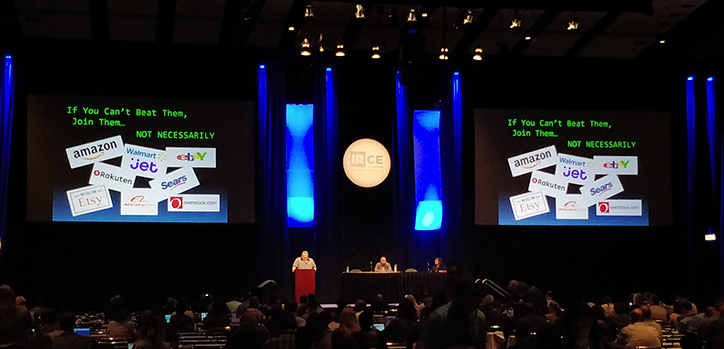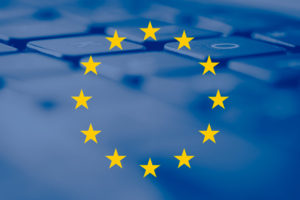3 Key Takeaways from IRCE 2018
We’ve just returned from IRCE 2018. Between the marketplace and the sessions, there was a lot happening. eCommerce and marketing professionals from around the world were in attendance, and everyone seemed to have something to bring to the table.
However, throughout the show, we found that three things seemed to be present in almost all of the conversations going on.
Here are what we think were the three main takeaways from IRCE this year.
With huge marketplaces such as Amazon, speakers such as Seth Godin stated that “You will lose on price” if you try and compete there.
Instead, small companies should start to look at fringe groups that are likely to grow with time. Effectively building a business is about making change happen. It’s about taking something and increasing its value in the public consciousness.
This led Godin to prompt everyone to ask themselves two questions about their brand:
- Who’s it for?
- What’s it for?
Throughout IRCE, this theme found itself springing up time and time again.
The speech Institutionalize Innovation by Roe Macfarlane talked about how market segmentation required specific actions based on age, including the type of leader different groups are more inclined to follow.
Counter the Amazon Effect also talked about how it was important to innovate and inspire change in order to compete with the eCommerce giants of today. How did many people suggest this change and niche focus should come about? Personalization.
Godin’s second standout statement during his keynote was also repeated by speakers throughout IRCE 2018. The importance is not in marketing to a mainstream audience, but in appealing to those who are already a friend to your brand. These connections should be nurtured in a way that creates a “tribe” that follows one thing: you.
This tribe should be nurtured through personalization techniques.
Personalization 2.0: Making the Move to Individualization by Brendan Witcher talked about the ultimate destination of personalization techniques: individualization, not segmentation. He also went over how to make use of big data to do this (without becoming ‘creepy’).
We also saw David Blades of Jenson USA talk about the importance of user generated content in boosting sales. The community wants the brand to be about them, and what better way to make it about them than by having them generate the content.
With the first Magento Straight Talk during IRCE came conversations about machine learning and its place in eCommerce. For many businesses, the idea of machine learning has become something that is spoken about a lot but hasn’t shown enough value to be applied independently.
Anita Andrew’s talk inspired a different perspective, with stats on how effective machine learning has been for some huge brands. Target saw a 30% growth in revenue after applying machine learning techniques. Amazon saw a 55% increase in sales from personal recommendations, and USAA saw a 76% improvement in customer support contact and product offering fit.
Yet Anita did mention the issue with what she termed ‘dirty data’. Throughout the big data sessions, dirty data become a central point of interest. How do you take outliers and unpredictable variables and apply them to machine learning algorithms? Many of the IRCE speakers gave their own perspectives and approaches to cleaning for different purposes. Anita talked about cleaning data in order to boost product offerings. In Personalization 2.0, the focus was on how to clean data to truly individualize your brand. In the merchandising track, Carter Perez talked about how Machine learning could be used to improve product discovery.
Regardless of where you heard it, the message was clear: machine learning is the future and it’s here now.
Outside of the sessions, the marketplace was abuzz with activity. Many of those exhibiting at the show had something to offer that linked into the topics mentioned above.
Hostdedi met with several old, new, and future clients during the show and had a great time with all of them. We also went to go see the Cubs vs. Phillies game in Wrigleyville, with over 250 RSVPs to the rooftop event. We’ll leave you with the view we had and look forward to seeing you next time!









 Facebook is a vital source of traffic for many web publishers, but they are at the mercy of the social giant’s ever changing standards of what constitutes quality content. Those standards dictate the content that appears in users’ Newsfeeds, and the order in which it is ranked.
Facebook is a vital source of traffic for many web publishers, but they are at the mercy of the social giant’s ever changing standards of what constitutes quality content. Those standards dictate the content that appears in users’ Newsfeeds, and the order in which it is ranked.








